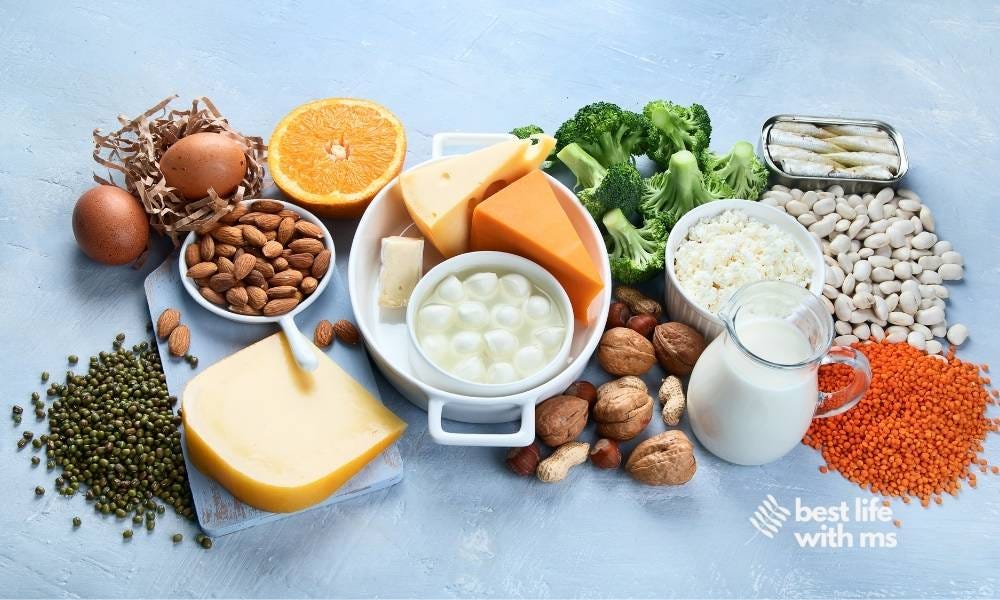Where does Calcium Come From? (Why it Matters for People with MS)
Turns out cows are not calcium-making factories for humans, after all
This piece is an adapted Substack from the original piece on Best Life with MS

We all know we need it?
But what is it?
Calcium is a mineral.
It comes from the earth. Specifically, from limestone.
Plants and grasses absorb the calcium.
What do cows eat? Grass and plants.
That's why the milk they produce contains calcium.
Liquid cows milk contains around 110 mg of calcium per 100 mL or 3.38 fluid ounces.
But other foods are higher in calcium.
This is handy to know if you're allergic to dairy — or don't eat dairy for some other reason (such as it triggering MS flareups).
Foods with more calcium than cows milk
Almonds have around 385 g per cup.
Eating a whole cup of almonds is quite a lot, but you can grind them and sprinkle them over your salad or breakfast.
Kale - Two cups of chopped raw kale contains a whopping 180mg of calcium.
Massaging kale with olive oil will remove the slightly bitter taste.
Broccoli and spinach have around 100mg of calcium per cup.
Same with Edamame (those cute little soybeans you buy frozen or eat in Japanese restaurants. They contain around 98mg per cup.
Tofu is a great source of calcium. A standard slab contains 260mg to 350 mg if fortified, per half cup.
Oranges have 75 mg per orange.
Sunflower seeds contain 109 mg per cup. It also contains vitamin E, magnesium, and copper, so it's great for skin. (It's also a whopping 21% protein, but that's another story.)
Our bodies, especially our gut microbiome, are designed for a variety of foods, so variety is the key to getting enough calcium. (There's no need to eat ten oranges or a kilo of almonds.)
What about Bone Health?
A high dairy intake doesn't reduce your risk of osteoporosis, like we've been led to believe, according to this meta study.
We definitely need calcium for strong bones. But we also need to Vitamin D, protein, magnesium, Vitamin K and weight-bearing exercise.
For a fuller picture, genes, alcohol, and smoking also play a role in our bone health.
How much calcium do we need?
According to the nutrition guidelines, we need about 1,000 mg a day.
This is the range from age 9 to 70.
More calcium is recommended if you're over 70. But dairy to prevent bone weakening is controversial at best. Strength training and vitamin D are important.
Wrapping up
Calcium comes from limestone, not cows.
Turns out that cows are not little calcium-making factories for the dietary benefit of humans.
We need around 1,000 mg a day but it's easy if we eat real food and a decent variety.
Some studies suggest too much dairy can increase the risk of hip and other fractures in older age groups.
If you have MS at any age, plants, fruit, seeds, green leafy vegetables, and nuts are better sources of calcium than the secretions of Mama Cow.
You’ll skip Mama Cow’s hormones that turn Baby cow into a strapping young four-legged hoofer, fast! You’ll also skip the butyrophilin (that looks so much like myelin my adaptive immune system can’t tell the difference) on the edge of milk fat. Just sayin’.
Be well
XO




